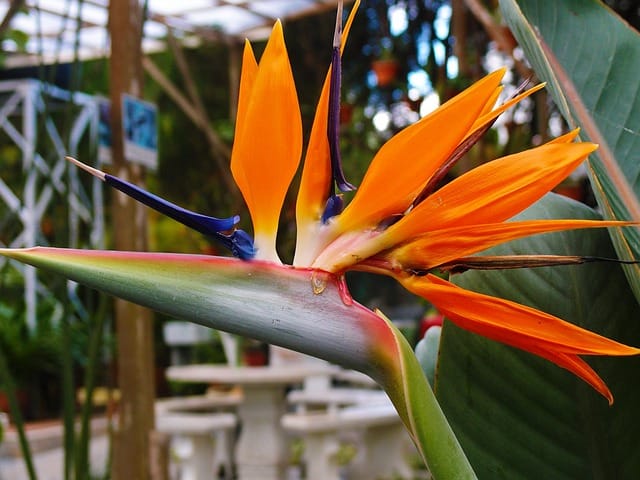Bird of Paradise is a popular tropical plant that is known for its stunning and exotic appearance. The plant has broad leaves that resemble the shape of a bird’s beak and bright orange and blue flowers that bloom during the summer months.
While the Bird of Paradise is a relatively low-maintenance plant, it is not immune to problems. One of the most common issues that plant owners face is browning stems.
Understanding the Bird of Paradise plant is essential to identifying and addressing stem browning. The plant is native to South Africa and requires a warm and humid climate to thrive. It can grow up to six feet tall and wide and prefers well-draining soil and bright, indirect sunlight.
While the plant is relatively hardy, it is susceptible to a variety of problems that can cause the stems to turn brown.
If you notice your bird of paradise stems turning brown, it is important to take action quickly to prevent further damage. There are several common causes of browning stems, including overwatering, underwatering, pests, and disease. By understanding the underlying cause of the problem, you can take steps to care for your plant and encourage recovery.
Key Takeaways
- Bird of Paradise is a popular tropical plant known for its exotic appearance.
- Browning stems are a common problem that can be caused by overwatering, underwatering, pests, and disease.
- Identifying the underlying cause of the problem is essential to caring for affected plants and encouraging recovery.
Also see:
Understanding Bird of Paradise
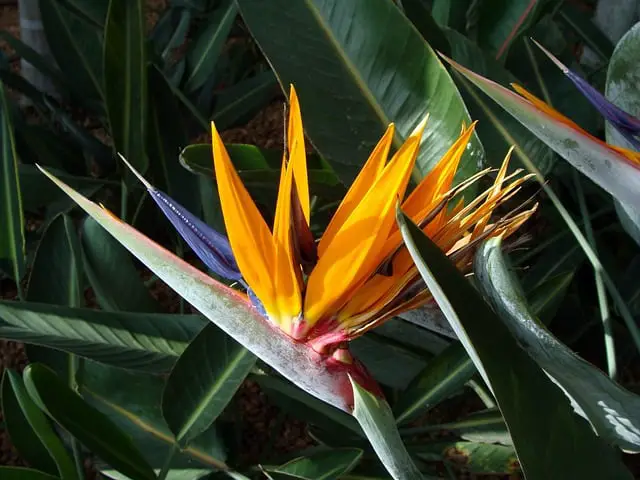
Bird of Paradise is a tropical plant native to South Africa that is known for its striking, colorful flowers that resemble a bird in flight. The plant is also commonly referred to as Strelitzia or Crane Flower. The plant is named after the bird of paradise because of its resemblance to the bird’s beak and plumage.
Bird of Paradise plants are commonly grown indoors and outdoors and are prized for their unique and exotic appearance. The plant has long, slender stems with large, glossy leaves that can grow up to six feet tall. The flowers of the plant are bright orange and blue and can grow up to eight inches long.
Bird of Paradise plants are relatively easy to care for and can thrive in a variety of conditions. They prefer bright, indirect sunlight and well-draining soil. The soil should be kept moist but not waterlogged, and the plant should be fertilized regularly during the growing season.
However, despite their hardiness, Bird of Paradise plants can develop brown spots on their leaves and stems. This can be caused by a variety of factors, including fungal disease, pest infestation, over-fertilization, and edema. In addition, insufficient humidity, poor water quality, and incorrect temperatures are all possible causes.
To keep Bird of Paradise plants healthy and vibrant, it is important to provide them with the proper care and attention. Regular watering, fertilization, and pruning can help prevent brown spots and other issues from developing. If brown spots do appear, quick treatment with fungicides or insecticides can help prevent further damage and restore the plant to health.
Signs of Trouble
When the stems of a bird of paradise plant start to turn brown, it is a sign that something is wrong. Brown stems can be caused by a variety of factors, including sunburn, insect infestations, fungal infections, root rot, and poor water quality.
In addition to brown stems, other signs of trouble with a bird of paradise plant can include brown leaves, brown edges, brown spots, yellowing leaves, wilting, stunted growth, leaf blight, leaf splitting, droop, and split. It is important to pay attention to these signs and take action to address the underlying issue as soon as possible.
One common cause of brown stems in bird of paradise plants is sunburn. This can happen when the plant is exposed to direct sunlight for too long, especially during the hottest part of the day. To prevent sunburn, it is important to provide the plant with some shade during the hottest part of the day, or to move it to a location with less direct sunlight.
Another common cause of brown stems is insect infestations. Insects like spider mites, mealybugs, and scale insects can all damage the stems of a bird of paradise plant, causing them to turn brown and wilt.
To prevent insect infestations, it is important to keep the plant clean and free of debris, and to treat any infestations promptly with an appropriate insecticide.
Fungal infections can also cause brown stems in bird of paradise plants. These infections can be caused by overwatering or poor drainage, which can lead to root rot and other problems.
To prevent fungal infections, it is important to water the plant appropriately, allowing the soil to dry out slightly between waterings, and to ensure that the plant has good drainage.
Bird of Paradise Stems Turning Brown – 7 Common Problems
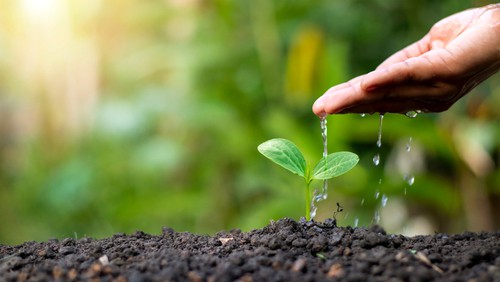
Browning stems on bird of paradise plants can be a sign of various issues. It is important to identify the cause of the problem to prevent further damage to the plant. Here are some common causes of browning stems on bird of paradise plants:
1. Overwatering
Overwatering is one of the most common reasons for browning stems on bird of paradise plants. When the soil is constantly wet, it can cause the roots to rot, which can lead to browning stems. It is important to water the plant only when the soil is dry to the touch.
2. Underwatering
On the other hand, underwatering can also cause browning stems on bird of paradise plants. When the soil is too dry, the plant can become stressed, which can lead to browning stems. It is important to water the plant regularly, but not too frequently.
3. Temperature Stress
Bird of paradise plants prefer warm temperatures and can be sensitive to temperature changes. Exposure to cold temperatures or cold drafts can cause browning stems.
4. Low Humidity
Bird of paradise plants prefer high humidity environments. When the air is too dry, it can cause the plant to become stressed, which can lead to browning stems. It is important to provide adequate humidity for the plant.
5. Direct Sunlight
While bird of paradise plants require bright light, direct sunlight can cause browning stems. It is important to provide indirect sunlight or filtered light for the plant.
6. Poor Water Quality
Poor water quality can cause browning stems on bird of paradise plants. Water that is high in salts or chemicals can be harmful to the plant. It is important to use filtered or distilled water for the plant.
7. Disease and Pest Infestation
Browning stems can also be a sign of disease or pest infestation. Fungal diseases, such as gray mold, can cause browning stems. Pest infestations, such as mealybugs or scales, can also cause browning stems. It is important to identify the issue and treat it accordingly.
Preventive Measures
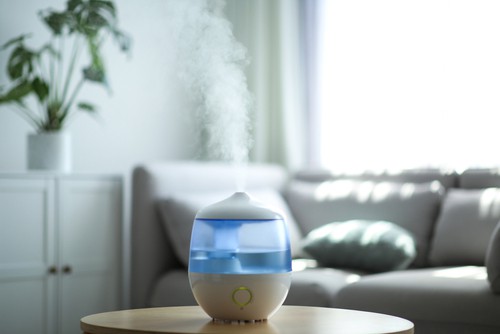
To prevent bird of paradise stems from turning brown, it is important to take proper care of the plant. Here are some preventive measures that can help:
- Soil Moisture: Overwatering or underwatering can cause stress to the plant and lead to browning of the stems. It is important to maintain the right level of soil moisture. Use a moisture meter to check the soil moisture level and water accordingly.
- Humidity: Bird of paradise plants prefer high humidity. Low humidity can cause the leaves and stems to dry out and turn brown. Use a humidifier or place a tray of water near the plant to increase humidity.
- Air Circulation: Proper air circulation can help prevent fungal diseases that can cause browning of the stems. Keep the plant in a well-ventilated area.
- Proper Care: Proper care is essential for the health of the plant. Regularly remove dead or damaged leaves and stems. Use clean pruning shears to avoid spreading diseases.
- Indirect Light: Bird of paradise plants prefer bright, indirect light. Direct sunlight can cause the leaves and stems to burn and turn brown. Place the plant near a bright window but avoid direct sunlight.
- Sheltered: Protect the plant from strong winds and cold drafts. Bird of paradise plants are sensitive to cold temperatures and can develop brown stems if exposed to cold drafts.
- Temperature: Bird of paradise plants prefer warm temperatures. Avoid exposing the plant to extreme temperatures. Keep the plant in a room with a temperature between 60-85°F.
- Water: Use clean, filtered water to water the plant. Avoid using water that is high in salts or minerals as it can cause browning of the stems.
- Soil Mix: Use a well-draining soil mix that is rich in nutrients. A good soil mix can help prevent root rot and other fungal diseases.
- Moisture Meter: Use a moisture meter to check the soil moisture level. Water the plant only when the soil is dry to the touch.
- Fertilizer: Use a balanced fertilizer to provide the plant with essential nutrients. Avoid overfertilizing as it can cause salt buildup in the soil.
- Water Quality: Use clean, filtered water to water the plant. Avoid using water that is high in salts or minerals as it can cause browning of the stems.
- Herbicides and Pesticides: Avoid using herbicides and pesticides near the plant. These chemicals can cause damage to the plant and lead to browning of the stems.
Caring for Affected Plants
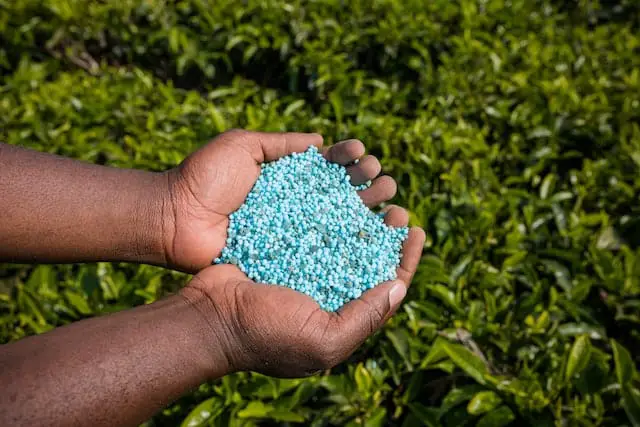
If a bird of paradise plant has brown stems, it is important to take action to save the plant. Here are some steps that can be taken to care for affected plants:
1. Repotting
If the bird of paradise plant is root-bound, it may need to be repotted. This can be done by gently removing the plant from its current pot and placing it in a larger pot with fresh soil. It is important to make sure that the soil is well-draining to prevent waterlogging, which can cause the stems to turn brown.
2. Pruning and Trimming
If the stems of the bird of paradise plant have turned brown due to disease or pest infestation, it may be necessary to prune or trim affected parts of the plant. This can be done by using clean, sharp scissors or pruning shears to remove any brown or dead stems or leaves. It is important to sterilize the tools before and after use to prevent the spread of disease.
3. Misting and Regular Misting
Bird of paradise plants benefit from regular misting to increase humidity levels. This can be done by using a spray bottle to mist the plant’s leaves and stems. It is important to avoid misting the flowers directly, as this can cause them to rot. Regular misting can help prevent the stems from turning brown due to a lack of humidity.
4. Soaking
Soaking the bird of paradise plant’s soil can help prevent the stems from turning brown due to poor drainage or waterlogging. This can be done by placing the pot in a tray of water for a few minutes, then removing it and allowing the excess water to drain away.
5. Fertilizer
Bird of paradise plants benefit from regular fertilization during the growing season. This can be done by using a balanced fertilizer with equal amounts of nitrogen, phosphorus, and potassium. It is important to avoid over-fertilizing, as this can cause nutrient deficiencies and brown stems.
6. Humidifier
If the air in the room is too dry, a humidifier can be used to increase humidity levels around the bird of paradise plant. This can help prevent the stems from turning brown due to a lack of humidity.
7. Water and Oxygen
It is important to make sure that the bird of paradise plant’s soil is well-draining and not waterlogged. This can be achieved by using a well-draining soil mix and avoiding overwatering. It is also important to make sure that the plant has access to oxygen, which can be achieved by using a pot with drainage holes and avoiding waterlogging.
8. Root System
The root system of the bird of paradise plant is important for its overall health and growth. It is important to make sure that the roots are healthy and not damaged or root-bound. This can be achieved by using a well-draining soil mix and avoiding overwatering.
9. Nutrient Deficiencies
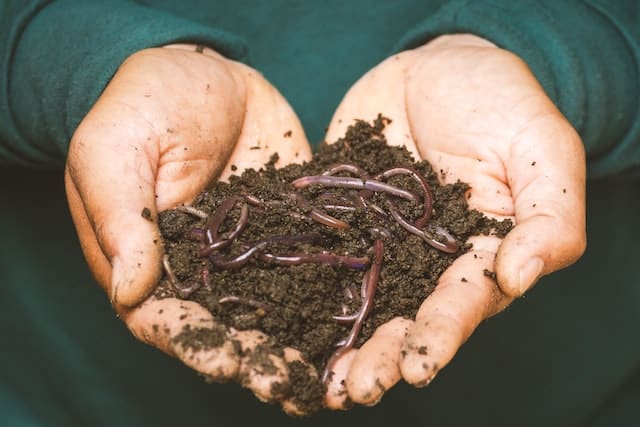
Bird of paradise plants can suffer from nutrient deficiencies, which can cause the stems to turn brown. This can be prevented by using a balanced fertilizer with equal amounts of nitrogen, phosphorus, and potassium. It is also important to make sure that the plant has access to other important nutrients, such as magnesium and iron.
10. Cinnamon, Chamomile, and Charcoal
Cinnamon, chamomile, and charcoal can be used to prevent and treat fungal infections that can cause the stems of the bird of paradise plant to turn brown. Cinnamon and chamomile can be added to the soil mix, while charcoal can be added to the bottom of the pot to improve drainage and prevent waterlogging.
11. Poor Drainage and Waterlogging
Poor drainage and waterlogging can cause the stems of the bird of paradise plant to turn brown. It is important to make sure that the soil is well-draining and that the pot has drainage holes to prevent waterlogging. If the pot does not have drainage holes, it may be necessary to drill them or to use a pot with drainage holes.
Recovery and Regrowth
When a Bird of Paradise plant has brown stems, it is important to take immediate action to help it recover and regrow. The first step is to identify the cause of the problem, which could be due to a variety of factors such as sunburn, overwatering, or pest infestation. Once the cause has been identified, the appropriate solution can be implemented.
If the brown stems are due to sunburn, it is important to move the plant to a location with indirect sunlight. Direct sunlight can cause the foliage to turn red or yellow, and can also cause the stems to turn brown. If the plant is an outdoor Bird of Paradise, it is important to ensure that it is planted in a location that receives partial shade.
If the brown stems are due to overwatering, it is important to reduce the frequency of watering. Bird of Paradise is a low-maintenance plant that does not require frequent watering. Watering once a week is usually sufficient, and the soil should be allowed to dry out slightly between waterings.
Overwatering can cause the foliage to turn blue and can also lead to root rot.
If the brown stems are due to pest infestation, it is important to take appropriate measures to control and manage the pests. Common pests that can infest Bird of Paradise plants include spider mites and scale insects. Insecticidal soap or neem oil can be used to control these pests.
Once the appropriate solution has been implemented, it is important to monitor the plant closely for signs of recovery and regrowth. New growth should start to appear within a few weeks, and the stems should start to turn green again. It is important to continue to provide the plant with appropriate care to ensure that it remains healthy and vibrant.
Frequently Asked Questions
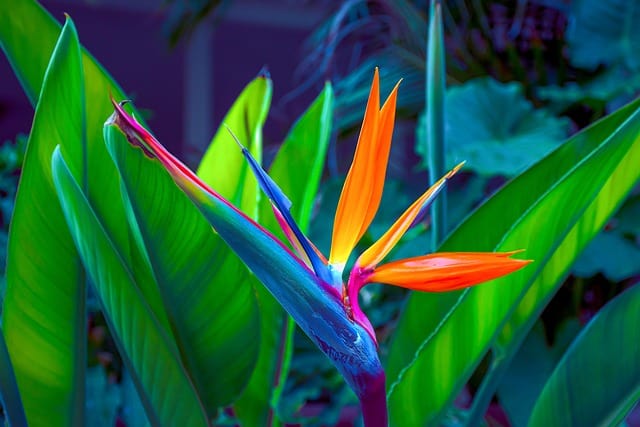
How do you fix browning on birds of paradise?
Browning on birds of paradise can be caused by various factors such as heat stress, lack of humidity, poor water quality, and diseases. To fix browning on birds of paradise, it is important to identify the underlying cause first.
For instance, if the browning is due to heat stress, moving the plant to a cooler spot or providing shade can help. If the browning is due to lack of humidity, misting the leaves or placing a humidifier nearby can help. If the browning is due to poor water quality, using filtered or distilled water can help.
Should I cut off brown leaves on my bird of paradise?
If the brown leaves are only on the tips, it is best to trim them off with clean scissors to prevent further damage. However, if the brown leaves are widespread and the plant looks unhealthy, it may be best to cut off the entire leaf or stem.
How can you tell if a Bird of Paradise has root rot?
Root rot is a common problem in birds of paradise and can be caused by overwatering or poor drainage. Signs of root rot include yellowing or wilting leaves, brown and mushy roots, and a foul smell. To check for root rot, gently remove the plant from its pot and examine the roots. If the roots are brown and mushy, it is likely that the plant has root rot.
Why are my bird of paradise leaves turning brown and curling?
Bird of paradise leaves can turn brown and curl due to various factors such as underwatering, overwatering, pests, and diseases. If the plant is not getting enough water, the leaves may turn brown and curl. If the plant is getting too much water, the leaves may also turn brown and curl.
Pests such as spider mites and mealybugs can also cause the leaves to turn brown and curl. Diseases such as leaf spot and blight can also cause the leaves to turn brown and curl.
What causes white fungus on bird of paradise?
White fungus on bird of paradise can be caused by powdery mildew, a fungal disease that thrives in humid conditions. Powdery mildew can cause white or grayish patches on the leaves, stems, and flowers of the plant.
To treat powdery mildew, it is important to remove any infected parts of the plant and improve air circulation around the plant. Fungicides can also be used to treat powdery mildew.
Why is my bird of paradise stem tip turning brown?
If the stem tip of a bird of paradise is turning brown, it may be due to physical damage or disease. Physical damage can be caused by accidental breakage or pruning. Disease such as stem rot can also cause the stem tip to turn brown.
To prevent physical damage, it is important to handle the plant with care and avoid over-pruning. To prevent disease, it is important to provide proper care for the plant and avoid overwatering.

Hey, I’m Lisa and I’ve been an avid gardener for over 30 years. I love writing, talking and living in the garden! Feel free to connect with me on my socials below

